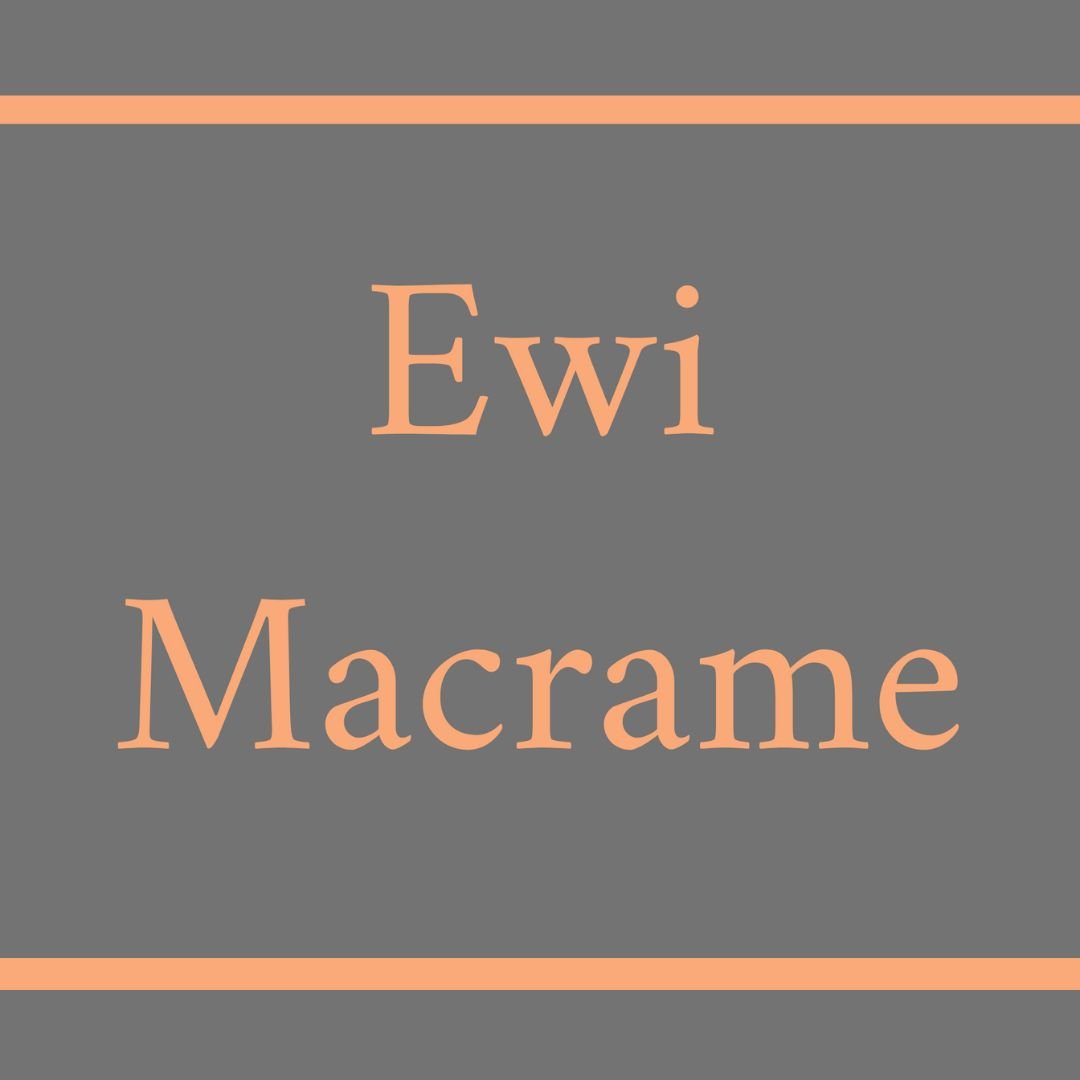Micro Macrame as a Crisis Craft: Perfect for Tough Times
When the world changes faster than we can keep up, our hands seem to know what to do. They make. They repair. They tie small knots that carry meaning when everything else feels uncertain.
Throughout history, handmade crafts have quietly returned during hard times — through war, economic hardship, industrial upheaval, and even the rise of new technologies. These are what I like to call “crisis crafts”: creative skills born from limitation, yet full of resilience, hope, and quiet strength.
From Lace to Knots: Crafting Through Crisis 🏛️
Handcraft has always found its way back during difficult times — when people needed both income and meaning. Two stories from the past continue to inspire me deeply: Margaretenspitze from early 20th-century Germany, and Cavandoli macramé from post-war Italy.
Margarete Naumann, working in the lace-making region of Vogtland, created Margaretenspitze around 1913 as machine-made lace began taking over. Her knot-based lace technique offered women a new way to earn a living without expensive tools — turning thread and skill into self-reliance.
A few years later, Valentina Cavandoli in Italy taught macramé to children in an orphanage after the First World War, transforming leftover cords into colorful geometric designs. Her work gave creativity, confidence, and a bit of hope to those who had very little.
Both of these stories have caused me to look at micro macramé from a different perspective. It’s not just about design or trend — it’s a reminder that crafts like these have always helped people rebuild, find calm, and create value with their own hands.
Micro Macrame Today: The Modern Crisis Craft 🌟🧶
Just like Margaretenspitze and Cavandoli before it, micro macramé has quietly found its place in another time of uncertainty. With rising prices, unstable markets, and technology reshaping nearly every job, many of us are turning to small, meaningful crafts again — things we can do with our hands, at our own pace, and with almost no investment.
That’s what makes micro macramé so special right now. All you really need is a bit of cord, a board to pin it to, and time. Tutorials are everywhere — YouTube, blogs, online groups — and the materials are easy to find. You can start small, learn as you go, and even turn it into a side income 💰 if you wish.
Handmade micro macramé jewelry is also beautifully practical. The high-quality cords and knots make it exceptionally durable 💎 — pieces that can last for years. In times of inflation and fast fashion, that kind of lasting value feels refreshing.
And there’s another layer to it: the calm 🌿.
The repetition of knots, the texture of the thread, the slow unfolding of a pattern — it’s grounding. It’s a simple way to find order when the world feels uncertain.
If you ever decide to sell your work, you’ll find plenty of support here. On my blog, alongside posts about materials, techniques, and tutorials, I also share practical tips on preparing for craft fairs and navigating the handmade market.
Many makers start by selling their pieces on Etsy 🖥️ — it’s simple to set up and full of people who appreciate handmade art. You can even sell items made from my tutorials, and if you let me know about your shop, I may feature your work here on Ewi Macrame website as part of our growing creative community 🤝.
But even if you’re not selling, remember this: creating something with your own hands is still an act of resilience. A handmade bracelet, a pendant, or a gift for someone you love 🎁 — all of it carries the same quiet message that Margaretenspitze and Cavandoli once did: that beauty and hope can grow even in hard times.
View PDF tutorials by EwiMacrame on Etsy | Seasonal Inspiration

